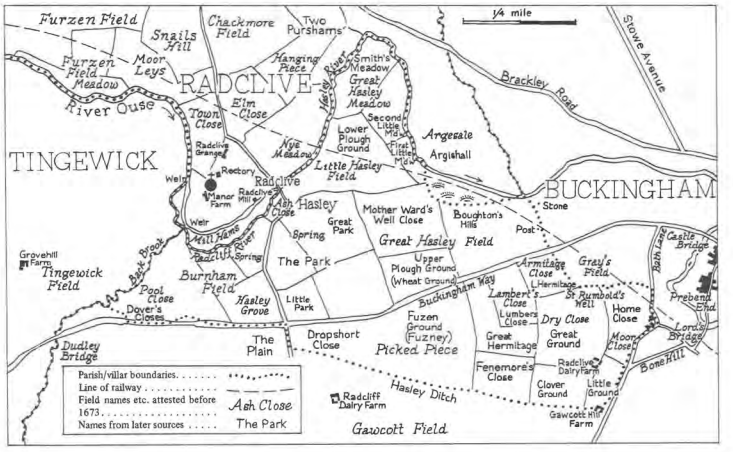In the pastoral heart of Buckinghamshire, along the winding course of the River Ouse, lies an oft-overlooked tale that is imbued with both forgotten legacies and whispered histories. This is the tale of Hasley, a region whose historical import is remarkably extensive, a consequence validated through a thorough examination of royal edicts and estate records.
In antiquity, the splendor of Hasley was legendary, its prominence demarcated by the River Ouse, which has borne witness to historical events from the Anglo-Saxon age to the Victorian era. Yet, as the centuries elapsed, the name Hasley grew elusive, gradually supplanted by the modern appellation of ‘Thornton.’
Within this geographical context, the River Ouse serves as more than a mere provider of sustenance; it delineates rich histories and political landscapes. To the north lay Radclive, which, as corroborated by tax records and agrarian contracts, played a crucial role during England’s medieval and Renaissance periods. Marked landmarks like the ‘Radclive Dairy Farm’ emerged as testaments to its lasting significance. To the south lay the agrarian stronghold of Tingewick, and to the southeast, Buckingham stood as a sentinel, fortified through its historical roles in the English Civil War and the Magna Carta era.
Throughout the course of history, the legacy of Hasley appeared to wane, overshadowed by neighboring territories. Yet, an exception persists in Gawcott, where the geographical feature ‘Hazley Ditch Furlong’ survived until the Enclosure Acts of 1821. The persistence of this nomenclature speaks to the durable influence of Hasley upon the local vernacular.
The River Ouse itself was a defining feature in the shaping of regional identities, especially during periods of political upheaval such as the Hundred Years’ War and the Wars of the Roses. In the 10th century, the river separated disparate cultures, economies, and feudal structures—distinctions that grew increasingly nebulous as England moved into the modern era.
Oral traditions and field names became the repositories of historical memory. Names like ‘Dropshort’, ‘Fuzney’, ‘Mother Ward’s Well Close’, and ‘Boughton’s Hills’ serve as intriguing lexical artifacts, each evolving over time and bearing witness to the shifting socio-political dynamics, from the Plantagenet reigns to the Elizabethan age.
Particularly captivating is the tale of ‘Hasley Grove,’ once a sprawling woodland that now exists only in collective memory as ‘The Golf Links Fields.’ This shift in utilization from natural splendor to recreational amenity is a microcosm of the broader changes England underwent during the Industrial Revolution and the subsequent Victorian era.
The formal documentation, most notably the Domesday Book, scarcely encapsulates the grandeur of the Barony of Hasley. Subsequent royal clarifications under monarchs such as Edward III and Queen Anne have substantiated its territorial significance. Notable nobles, including John Barton, Robert Ingleton II, and the Tyrrell family, further punctuate the lineage of Hasley, according to heraldic records and parliamentary rolls.
The significance of Hasley, then, transcends mere geography. It stands as a monumental testament to Buckinghamshire’s complex tapestry of historical, political, and social dynamics. As elucidated by royal charters and corroborated by heraldic entries, the Barony is pivotal to understanding not only local but also national history.
In summary, the Barony of Hasley represents more than a mere title. It embodies an enduring historical gravitas that has reverberated through the centuries, contributing significantly to the socio-political fabric of both Buckinghamshire and the United Kingdom at large. A profound appreciation of its vast boundaries, later revised and ratified by royal authority, is vital to a comprehensive understanding of its expansive history and perpetual legacy.



